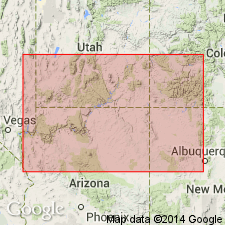
- Usage in publication:
-
- Hoskinnini tongue*
- Modifications:
-
- Original reference
- Dominant lithology:
-
- Redbeds
- AAPG geologic province:
-
- Black Mesa basin
- Paradox basin
Summary:
Pg. 1422, 1423, 1441, 1443, 1446. Hoskinnini tongue of Cutler formation [also Hoskinnini member]. Red sandstones and sandy shale, 0 to 75 feet thick, forming top part of Cutler formation in Monument Valley and other areas in southern San Juan County, southeastern Utah, and northeastern Arizona. Unconformably underlies true Moenkopi formation and overlies DeChelly sandstone member of Cutler formation. In earlier reports all these beds were included in Moenkopi formation (Lower Triassic), but they are Permian.
Exposed on north face of Hoskinini [Hoskinnini] Mesa, several mi west of Oljeto trading post, in Moonlight Wash, btw. Ferry and Kayenta, northeastern AZ.
Source: US geologic names lexicon (USGS Bull. 896, p. 983-984).
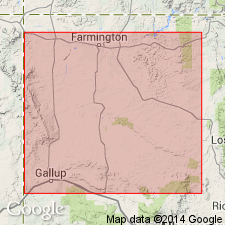
- Usage in publication:
-
- Hoskinnini member*
- Modifications:
-
- Revised
- AAPG geologic province:
-
- San Juan basin
Summary:
Pg. 90. Hoskinnini member of De Chelly sandstone. Reallocated to member status in De Chelly sandstone herein raised to formational rank. [Age of De Chelly is Permian.]
Source: US geologic names lexicon (USGS Bull. 1200, p. 1813).
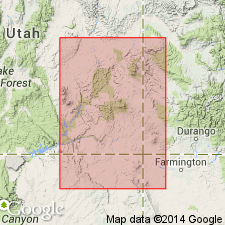
- Usage in publication:
-
- Hoskinnini member
- Modifications:
-
- Revised
- AAPG geologic province:
-
- Black Mesa basin
- Paradox basin
- Uinta basin
Summary:
Pg. 1852-1868. Hoskinnini member of Moenkopi formation. Recent work indicates unit originally defined as Hoskinnini tongue of Cutler formation extends into parts of southeastern Utah, where it has not been previously reported. Hoskinnini is correlated with part or all of unit defined as Tenderfoot member of Moenkopi formation in salt anticline region of east-central Utah and west-central Colorado. Hoskinnini redefined as member of Moenkopi. The Hoskinnini and laterally continuous strata in Tenderfoot member are exposed within a north-northeast oriented area about 180 miles long and 50 miles wide extending from Monument Valley area, in northeastern Arizona and southeastern Utah, to west-central Colorado. Thickness of Hoskinnini 0 to 126 feet; in most areas 50 to 120 feet. Overlies Organ Rock tongue of Cutler in most of southeastern Utah; overlies De Chelly sandstone member of Cutler near junction of Green and Colorado Rivers and southward into White River Canyon area. Problems of nomenclature discussed. Age is Triassic(?).
Source: US geologic names lexicon (USGS Bull. 1200, p. 1813).
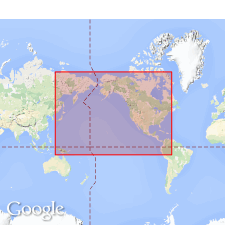
- Usage in publication:
-
- Hoskinnini Tongue*
- Hoskinnini Member*
- Modifications:
-
- Overview
- AAPG geologic province:
-
- Black Mesa basin
- Paradox basin
- San Juan basin
- Uinta basin
Summary:
Hoskinnini Tongue of Cutler Formation; Hoskinnini Member of Cutler Formation. Named for exposures on north face of Hoskinini [Hoskinnini] Mesa, San Juan County, Utah. Exposed in elongate area extending from Monument Valley in Arizona to about 6 miles southwest of Moab, Utah. Gregory (USGS Water-Supply Paper 380, 1916) shows Hoskinnini Mesa in southern part of San Juan County, Utah. Age is Triassic (?).
Source: US geologic names lexicon (USGS Bull. 1200, p. 1813).
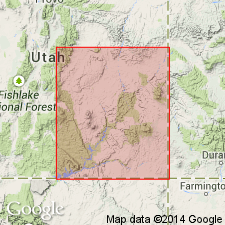
- Usage in publication:
-
- Hoskinnini Formation
- Modifications:
-
- Revised
- AAPG geologic province:
-
- Paradox basin
Summary:
Assigned formation rank. Underlies the newly named Black Dragon Member of the Moenkopi Formation in the eastern part of the Paradox basin of southeast UT. Black Dragon-Hoskinnini contact as described in one measured section is placed at the contact between a dark red-brown, very poorly sorted sandstone and siltstone (Hoskinnini) with a dark red-brown, micaceous, even-bedded siltstone and mudstone (Black Dragon). Magnitude of the hiatus between Moenkopi which is considered "Medial and Late Early Triassic (Smithian and Spathian)" and the Hoskinnini which may be Permian is uncertain. Cross sections.
Source: GNU records (USGS DDS-6; Denver GNULEX).
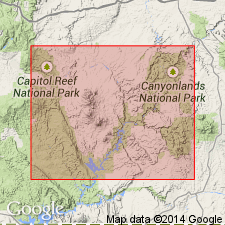
- Usage in publication:
-
- Hoskinnini Member*
- Modifications:
-
- Age modified
- Areal extent
- Revised
- AAPG geologic province:
-
- Paradox basin
Summary:
Is lower member of Moenkopi Formation. In White Canyon, San Juan Co, southeast UT, Paradox basin, Hoskinnini interfingers with and is a lateral equivalent to chert-pebble conglomerate facies which occurs in lower part of Black Dragon Member of Moenkopi (schematic cross section, fig 2). Lowermost Moenkopi is assigned to Black Dragon in western part of study area and to Hoskinnini in eastern part; lower part of Black Dragon-Hoskinnini interfingering occurs from west of Canyonlands National Park southward through Indian Head Pass and Happy Jack Mine (fig.1). Measured sections. Assigned Early Triassic age due to age equivalence of lower part of Early Triassic Black Dragon.
Source: GNU records (USGS DDS-6; Denver GNULEX).
For more information, please contact Nancy Stamm, Geologic Names Committee Secretary.
Asterisk (*) indicates published by U.S. Geological Survey authors.
"No current usage" (†) implies that a name has been abandoned or has fallen into disuse. Former usage and, if known, replacement name given in parentheses ( ).
Slash (/) indicates name conflicts with nomenclatural guidelines (CSN, 1933; ACSN, 1961, 1970; NACSN, 1983, 2005, 2021). May be explained within brackets ([ ]).

